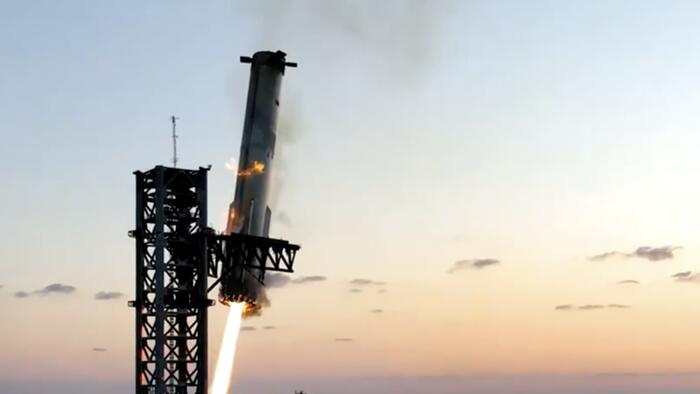On October 13, 2023, SpaceX marked a significant milestone in advancing the full reusability of space launch vehicles. During the fifth test flight of its Starship rocket, both its first stage, Super Heavy, and the second stage, Starship, demonstrated remarkable performance. The Super Heavy stage returned successfully to the launch pad, showcasing a critical aspect of reusability, while the Starship stage reached near orbital velocity and splashed down right on target in the Indian Ocean near Western Australia. This achievement is a pivotal step towards making second stages reusable, enhancing the economic viability of space exploration and satellite deployment.
The full reusability of Starship could lead to a dramatic reduction in launch costs, paving the way for new possibilities in space activities that were previously deemed too expensive or technically unfeasible. Although many of the applications considered are civilian, military uses, such as launching surveillance satellites and delivering large payloads swiftly across the globe via suborbital flights, are also on the horizon. Furthermore, once SpaceX develops the capability for Starship to refuel in orbit, it could potentially deliver substantial payloads to destinations like the Moon and Mars, making long-term human presence on these celestial bodies a feasible goal.
Cost efficiency is a crucial factor in the evolving landscape of space access. SpaceX’s current Falcon rocket enables partial reusability, bringing the launch cost down to approximately $2,720 per kilogram, a substantial reduction from the $25,000 per kilogram charged for NASA’s Space Shuttle flights. In contrast, the proposed upgrades to Starship could reduce costs to an astounding $100 to $200 per kilogram as the entire system becomes fully reusable. Comparatively, NASA’s Space Launch System (SLS), with its exorbitant per-launch costs that may reach up to $4 billion initially, stands in stark opposition to the economic model SpaceX is developing with Starship.
The design and capacity of Starship also open up further opportunities in satellite deployment, particularly for mega-constellations like Starlink, as it can launch large swathes of satellites in single missions. With an assembly line, the “Starfactory,” set up in Boca Chica, Texas, SpaceX aims to increase production rates to achieve one new Starship every week, potentially facilitating up to 44 launches annually across multiple launch sites. This high launch cadence coupled with low costs could revolutionize current space launch paradigms, allowing for unprecedented access to space and the rapid deployment of vital satellites.
Starship’s functionality extends beyond economic considerations; it holds significant strategic importance for NASA’s Artemis program, which aims to return humans to the Moon. SpaceX is crafting a specialized lunar lander variant of Starship for these missions. With plans to conduct uncrewed missions to Mars as early as 2026 and crewed landings by 2028, the ultimate vision includes establishing a lasting human presence on Mars and leveraging lunar resources for prolonged activities on both the Moon and Mars. Access to lunar water ice, which can be converted into rocket fuel, could transform the Moon into a vital hub for deeper solar system exploration.
The establishment of a permanent base on the Moon could catalyze an entire economy based on lunar resources, facilitating manufacturing and innovation in situ. This could lead to groundbreaking initiatives like the creation of large solar power satellites capable of providing energy solutions for Earth, and may eventually result in advanced commercial space platforms succeeding the International Space Station post-2030. With the possibilities of robotic space manufacturing using lunar materials, the next decades promise a dynamic era of space exploration and resource utilization, reshaping humanity’s place in the cosmos and driving technological advancements through innovative approaches to in-space industry.

